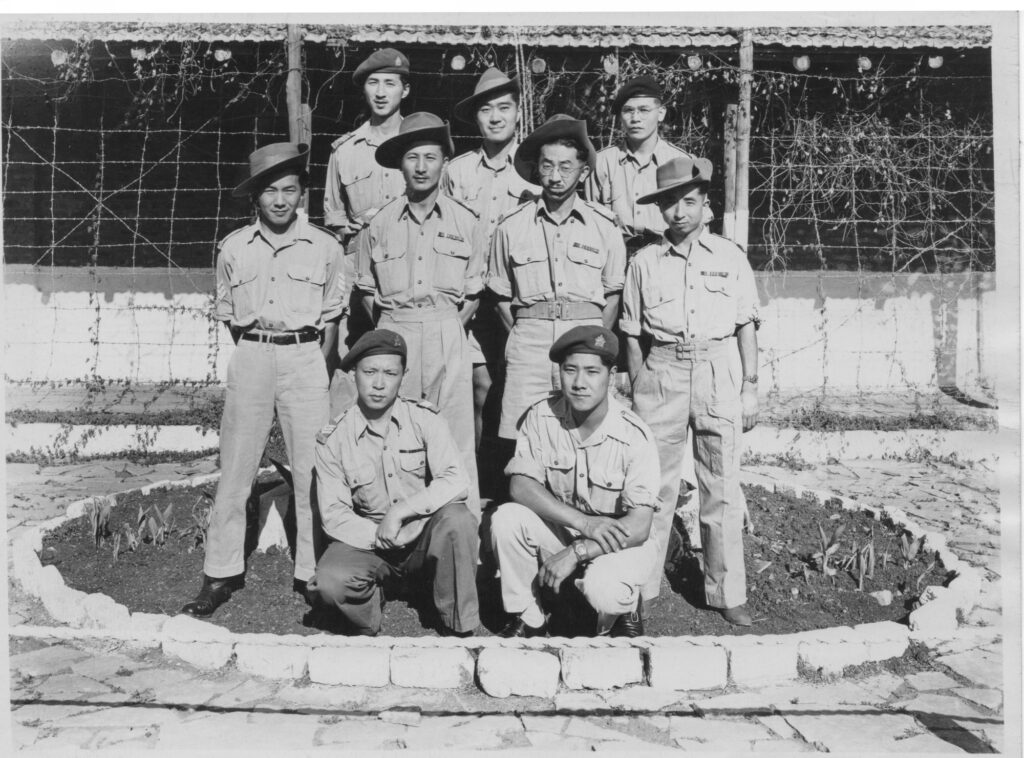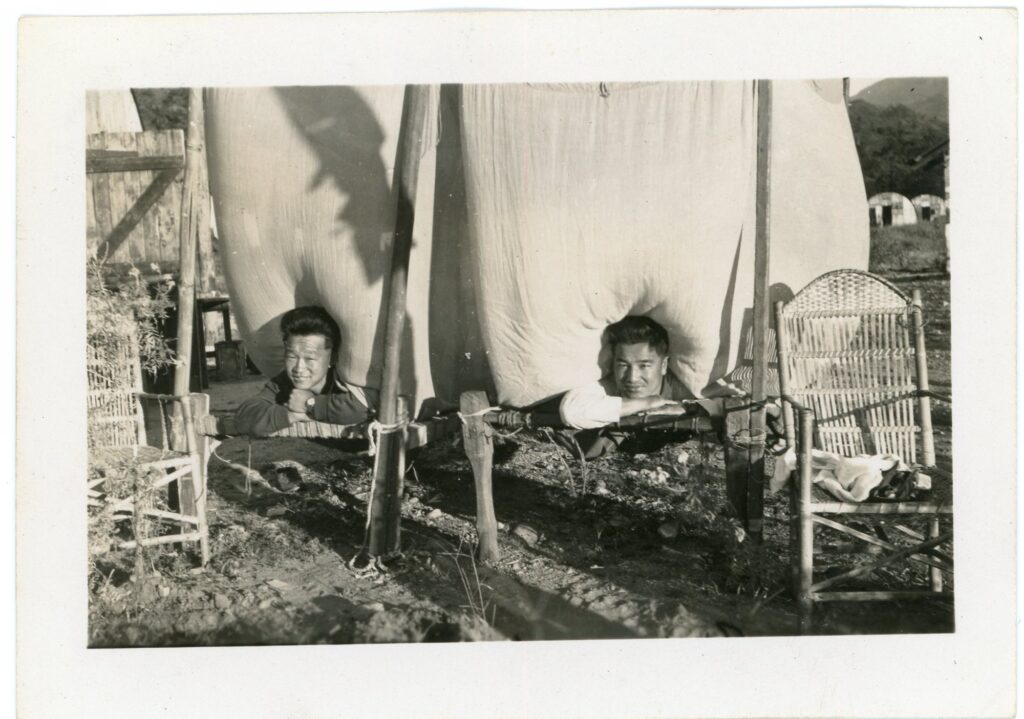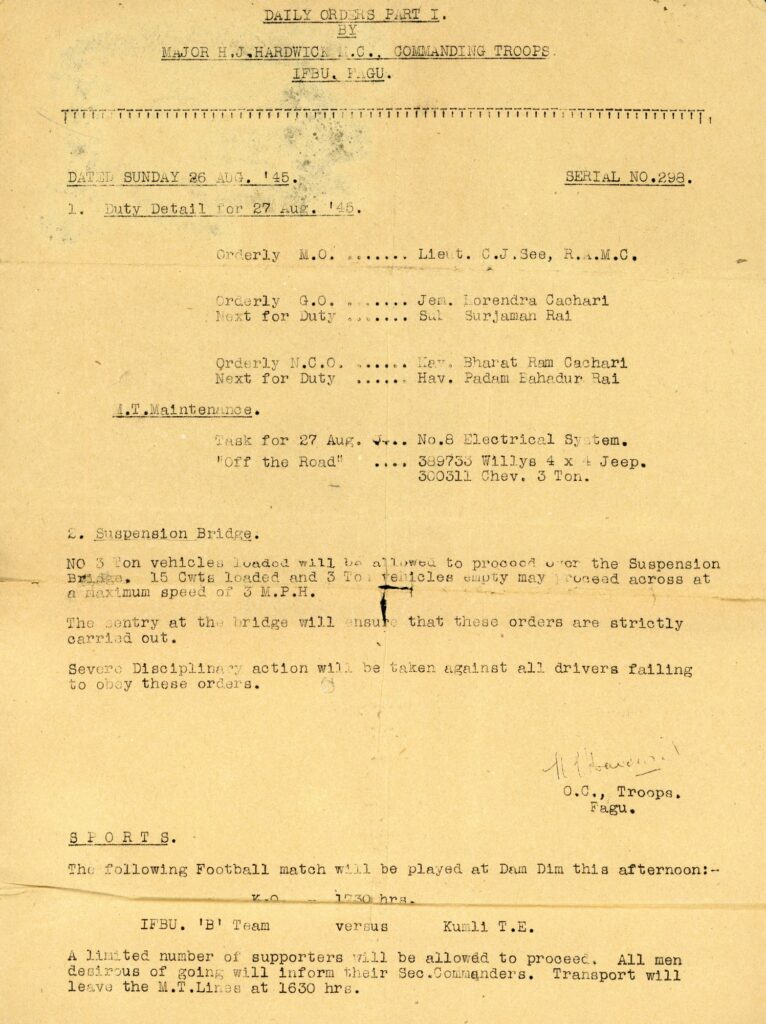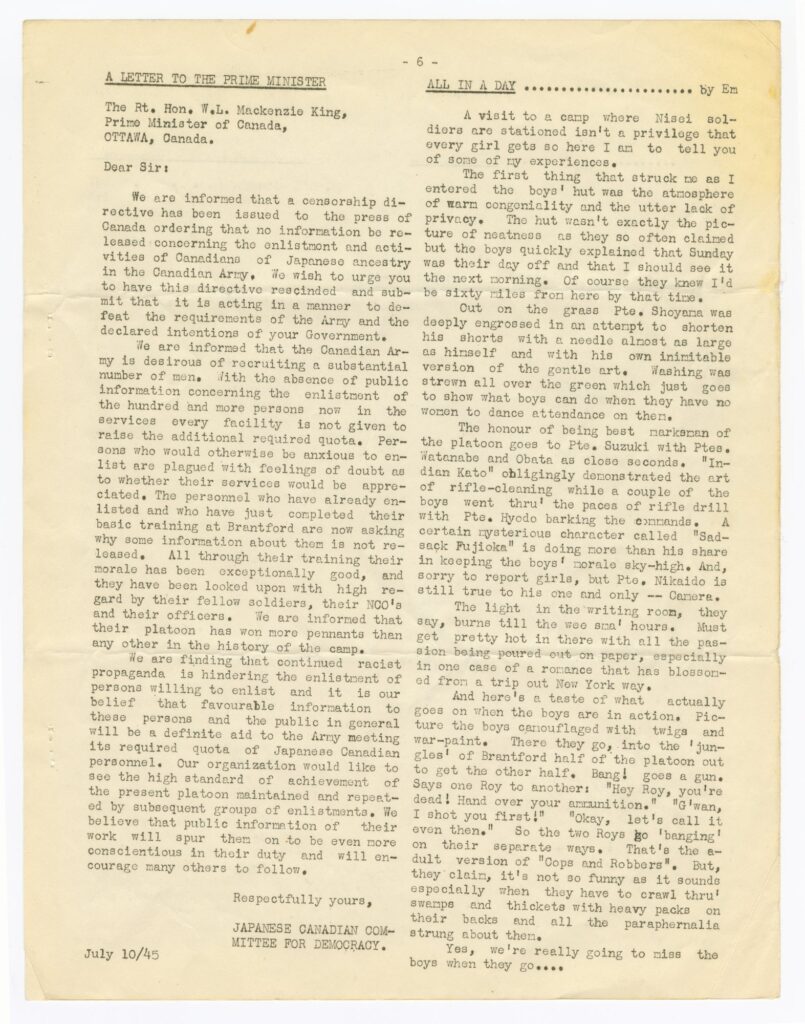Second World War / Japanese Canadian Military Service / Enlistment for Pacific Service
At a meeting between British Security Coordination and Canada’s External Affairs ministry, a decision was made to send 35 nisei for attachment to British Forces serving in Southeast Asia Command (SEAC).
The first of the twelve nisei that Captain Mollison had found to serve in the British Army was Albert Takimoto, who became the group’s leader (Ito, 1984, p. 235). The ability of each recruit in the Japanese language was assessed at a civilian house in Toronto. Those who passed the test were to travel to England as civilians, to be inducted into the British Army. The twelve recruits waited six months for their passports to go overseas, paid by the British Army. On February 24, 1945, just before they were sent to Britain, they learned that the Canadian government had decided to let them go overseas in Canadian uniforms (Oki, 1967, Adachi, 1976, p.294). They were quickly inducted into the Canadian army with no training and departed on a ship, on loan to the British Army (Adachi, 1976, p.294).


All nisei who were allowed into the Canadian Army after January 1945 became part of the Canadian Intelligence Corps. The nisei soldiers (excluding the three sent to Australia) who served overseas all travelled first to the U.K. to become attached to the British Intelligence Corps.
The second group of 21 nisei recruited by Mollison included men from Winnipeg, London, Ontario and other locations. The second group were to be provided with basic training in Toronto and four months language training in Pacific Command (Ito, 1984, p. 177). However, they left for overseas, shortly after the first twelve, with essentially no training (Ito, 1984, p. 182).


The remaining 33 nisei left Canada for England in February 1945. They sailed from London to Bombay, and were sent to Poona for basic training at the Force 136 Far Eastern Warfare School (Ito, 1984, p. 235), then to Calcutta for language testing.
As the nisei were arriving in India, the Japanese Army was retreating from Burma. The focus of the Allied forces under Commander Mountbatten shifted from Burma to Malaya.

The Canadian nisei were divided into groups and sent to different locations, based on their Japanese language ability. They were attached to SEAC. Some worked at the SEAC Headquarters in Ceylon. Some worked in psychological warfare, using loudspeakers to intimidate the enemy. Some were assigned to radio broadcast work in Ceylon and Rangoon. Several nisei were in the invasion force that landed in Malaya, then disarmed Japanese soldiers, and assembled Japanese civilians in Kuala Lumpur (Oki, 1967).
George Suzuki and Fred Nogami, in the second group sent to India, were in a plane that crashed into a barge in the Singapore Strait on March 27, 1946. Out of the 23 on board, only 7 survived; Suzuki and Nogami were lucky to escape with minor injuries. They were the only Canadian nisei to be injured during Pacific service (Ito, 1984, p. 260).


